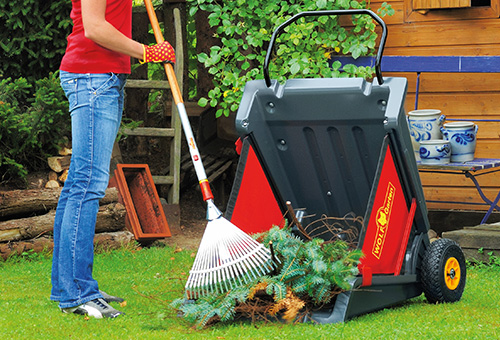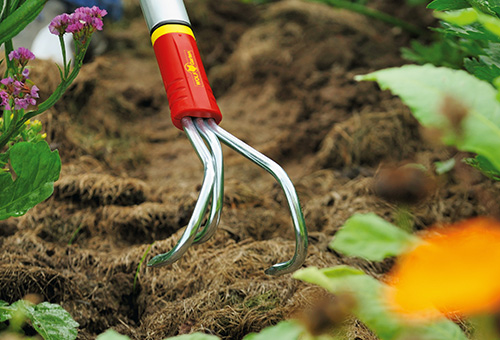Natural fertilizer
If you make compost you kill two birds with one stone, so to speak. You dispose of organic waste from your house and garden and gain humus as a result of the natural decomposition process, which in turn is the most suitable thing for fertilize the soil of your garden. This is a natural cycle to a certain extent.
What is suitable for composting?
This is good:
Most forms of garden and household waste that decompose in the air. But also newspapers, paper towels and cat litter are suitable. In general, various plants that rot away and so produce a balanced organic mixture also belong to compost. Not good:
Orange peel and the like is less suitable because it only rots very slowly. Do not include food leftovers containing meat, oils and fats, or treated wood; in short, everything which does not decompose readily or which has chemical additives If in doubt, do not put it in the compost.

Creating the compost heap correctly
First set up two large frames, the best thing to use is untreated wood. Collect the organic materials in one, the other one can be used for the composting and maturing. You require a composting area of around 3 m² per 100 m² of garden area. Your compost heap must of course always touch the ground so that the material can decompose. It should also be easily accessible and be at a well ventilated location, best of all is a shady area underneath a tree so that the compost is protected against direct sunshine and also against too much rainwater.
Layer by layer for the compost:
First of all, put in branches and twigs. These ensure that any surplus liquid drains away quickly. On top of that come alternating layers of finer and coarser material to allow the compost to be ventilated. Grass cuttings should be dry, to prevent mould. Some finished compost also accelerates the decomposition process.
Turning the compost
Transfers layers to the second container every 2 to 3 months of the compost that you have created so that it will rot more quickly and effectively. This process is called "turning" and improves the ventilation. Maturing proceeds faster if you add some garden earth, stone flour and also organic fertilizer between two layers that are a hand's breadth thick.
Finally matured
Most of the constituents have rotted down well after around 6 to 7 months. You can tell this from the fact that the compost that has now turned a dark colour smells like a forest floor, or in other words, it has turned into humus. But it will still include some coarser pieces that you cannot use optimally. Use a sieve to break it down. This results in a fine earth that is ideal for application to the soil. Anything that does not pass through the sieve goes back onto the compost heap. After all, it has earned a second chance.
Applying compost
At last: You can now use in your own garden the compost that you have produced. Spread the compost, or humus, onto the loosened soil. Wait at least a week before planting anything so that you can remove right away any weeds that spring up.

How much compost should you use?
This depends entirely on the needs for nutrients of the relevant plants. In vegetable gardens that ranges from 3 litres for square metre for so-called "low-nutrient-demanding plants" such as cauliflower and asparagus to 6 l/m² for "medium-nutrient-demanding plants" such as tomatoes and spinach up to 10l/m² for "high-nutrient-demanding plants" such as lettuce and radishes. You will need much more if you are creating a new bed and want to improve the soil: at least 15 to 20 l/m².